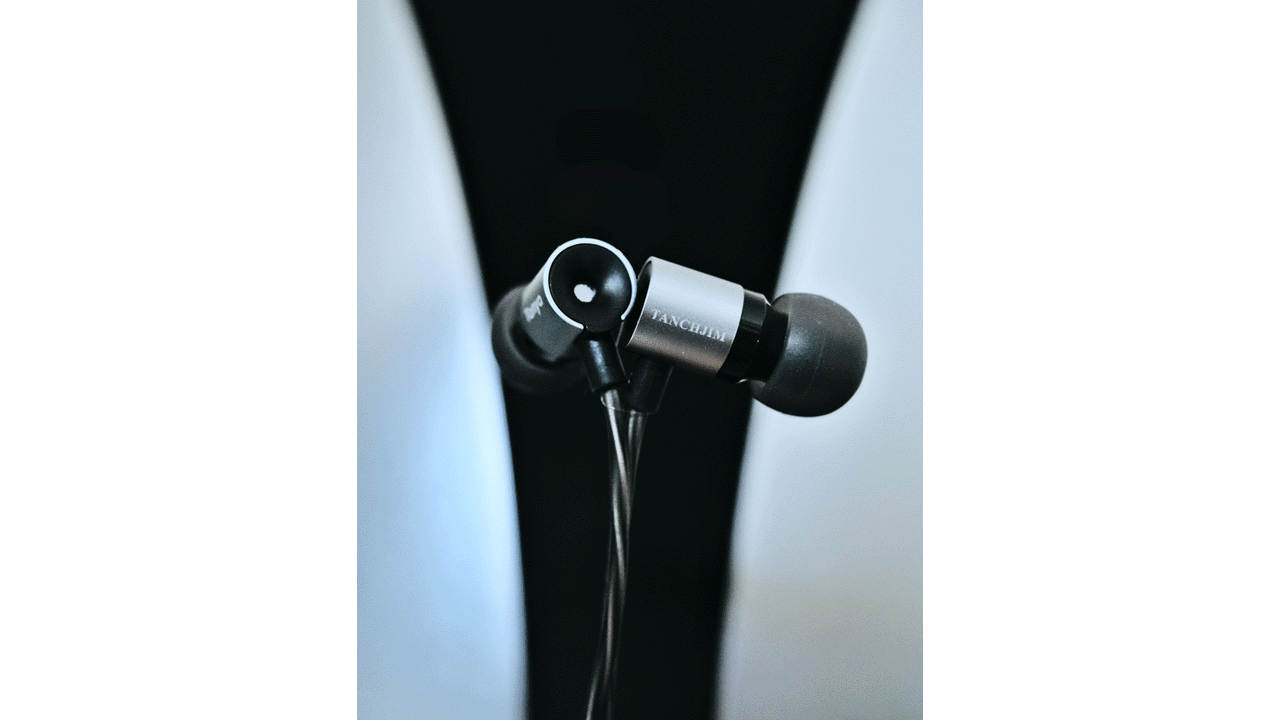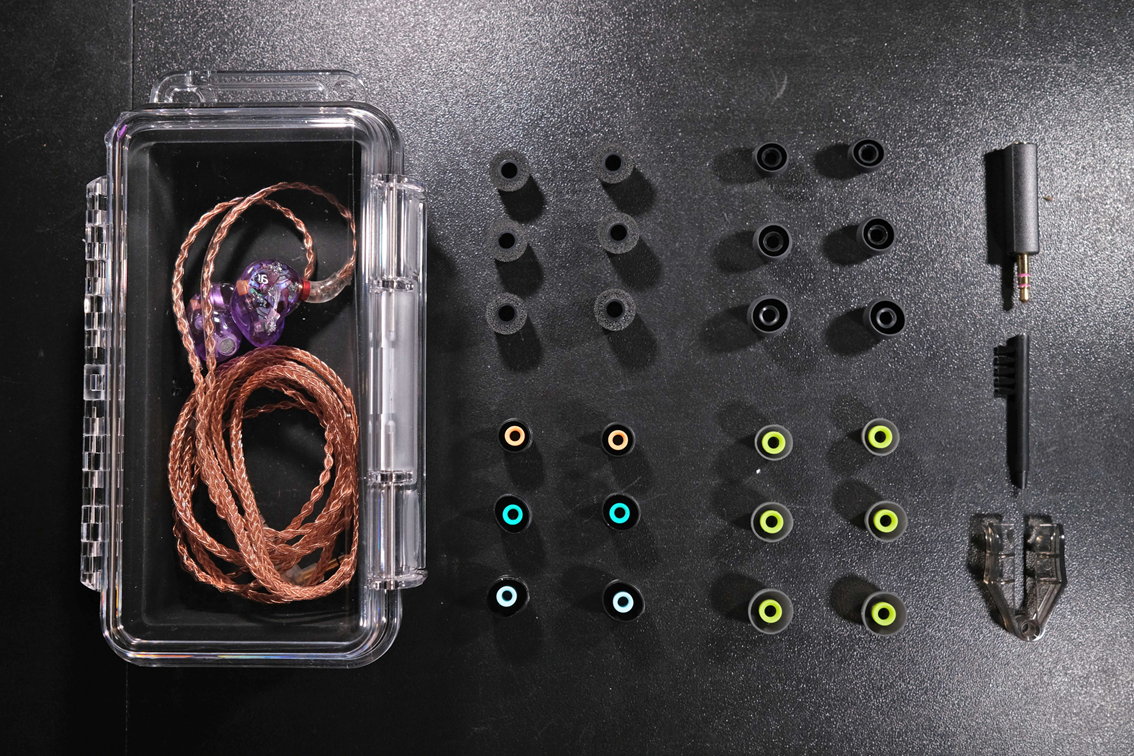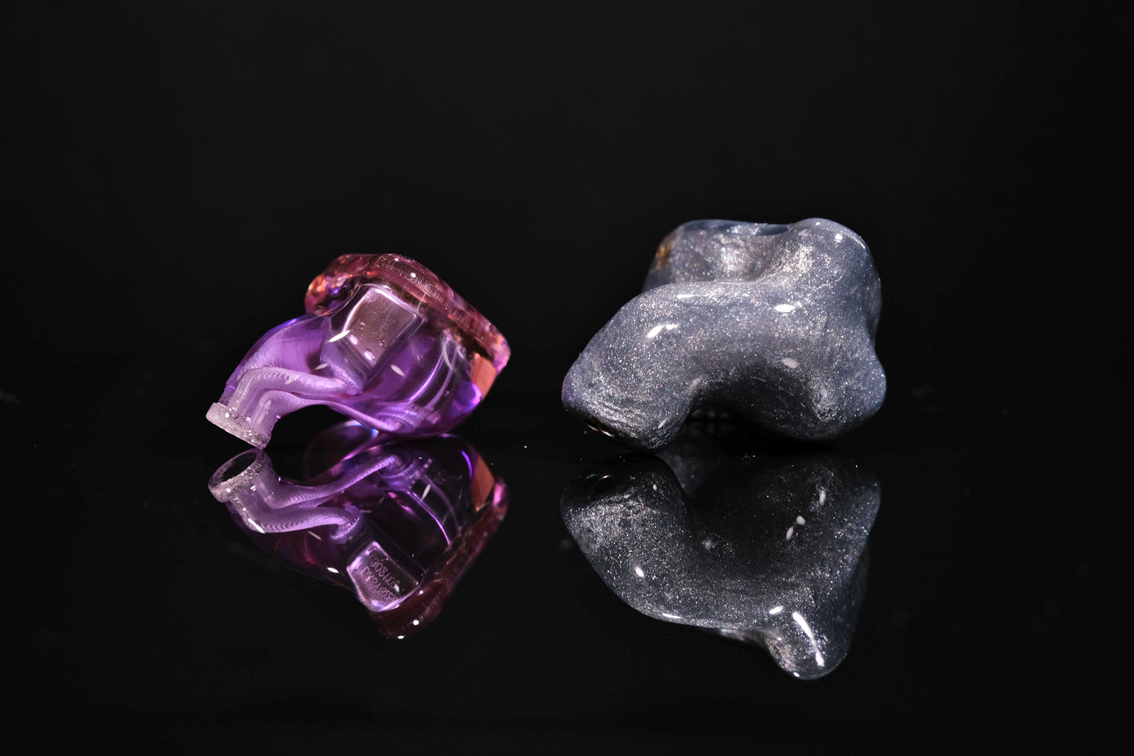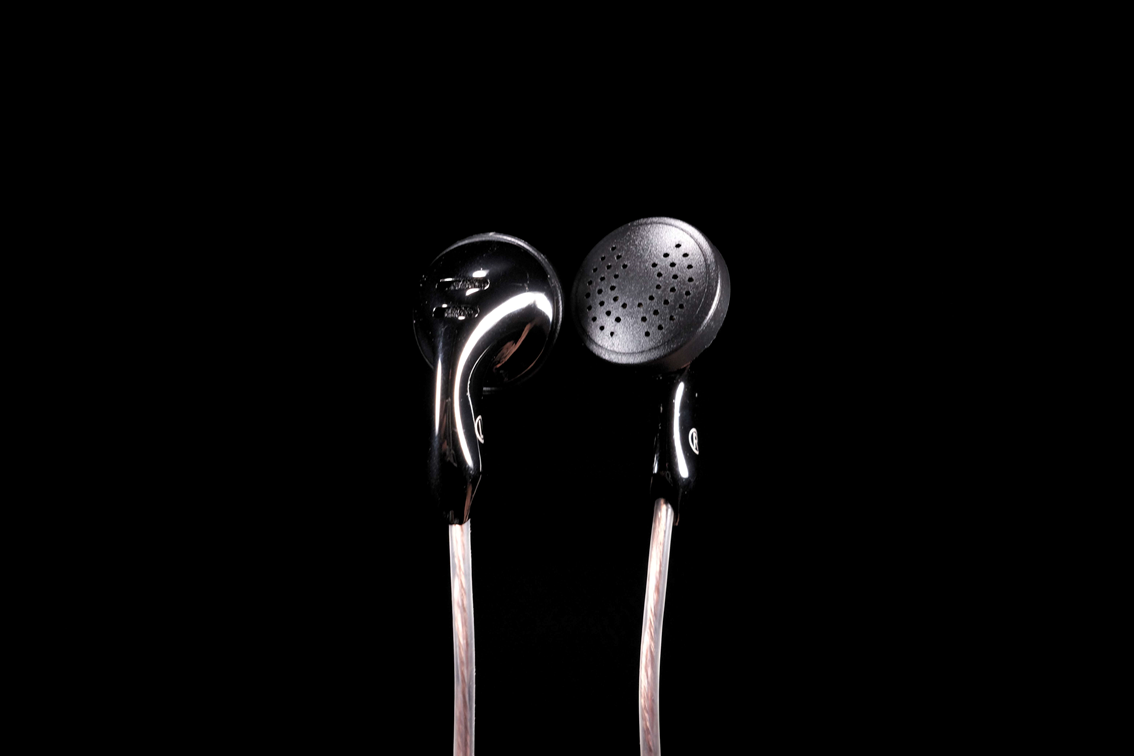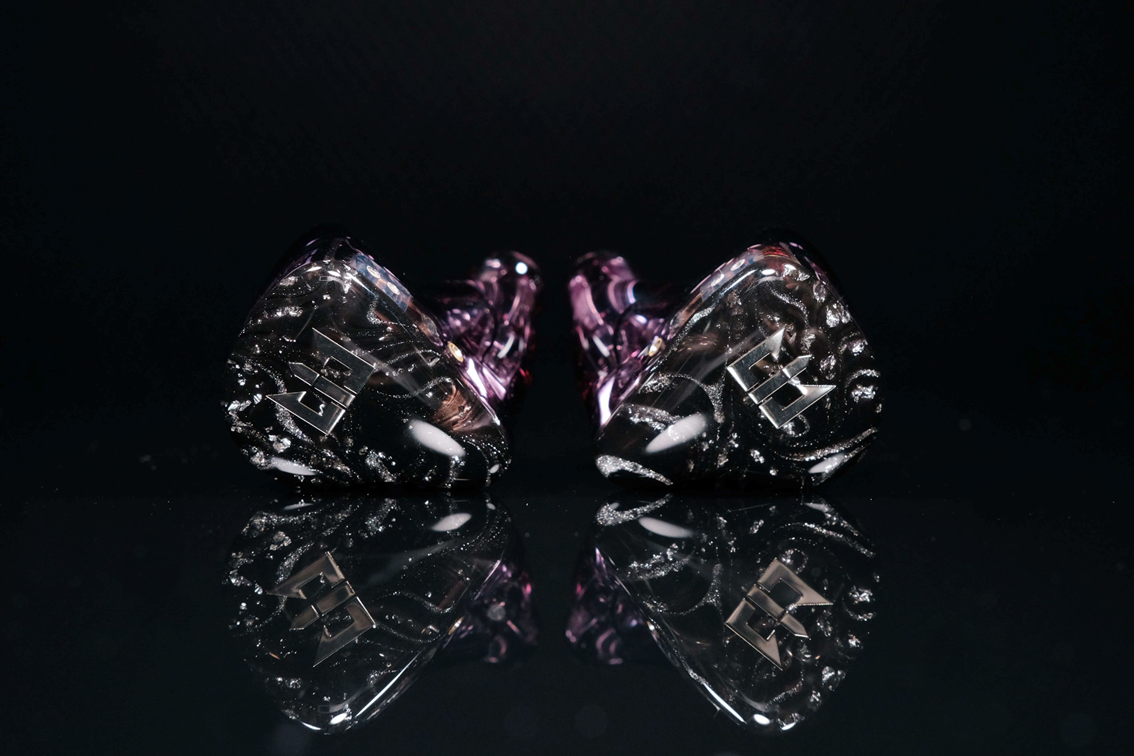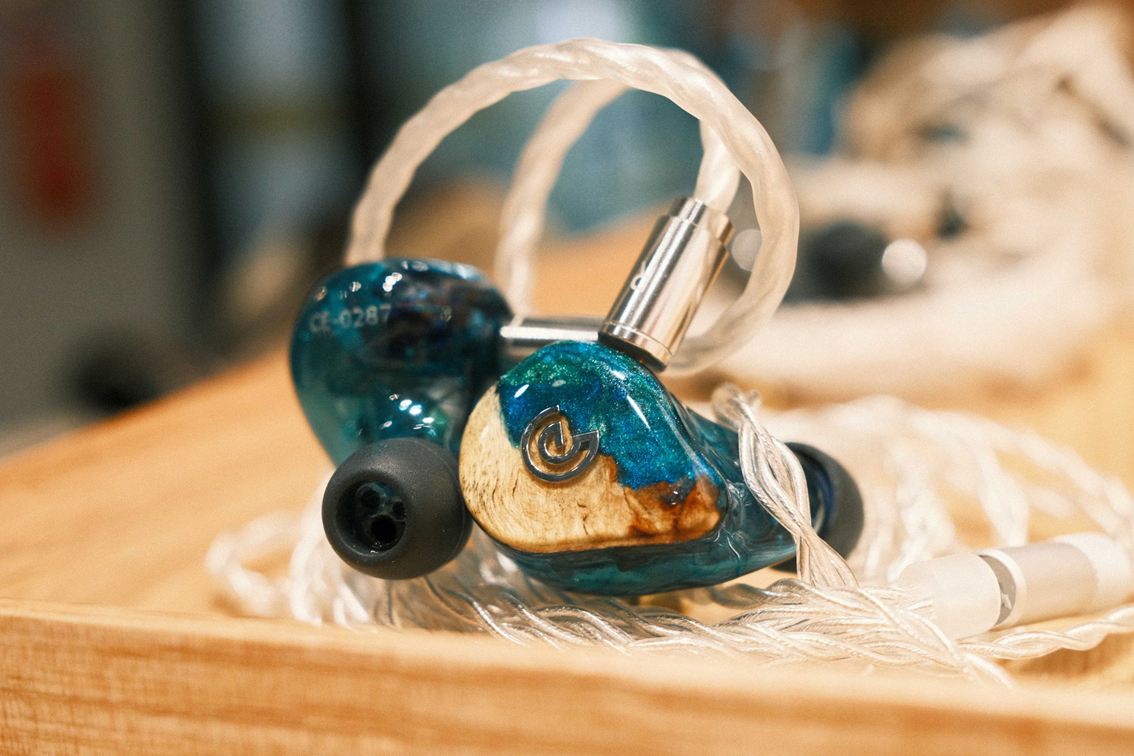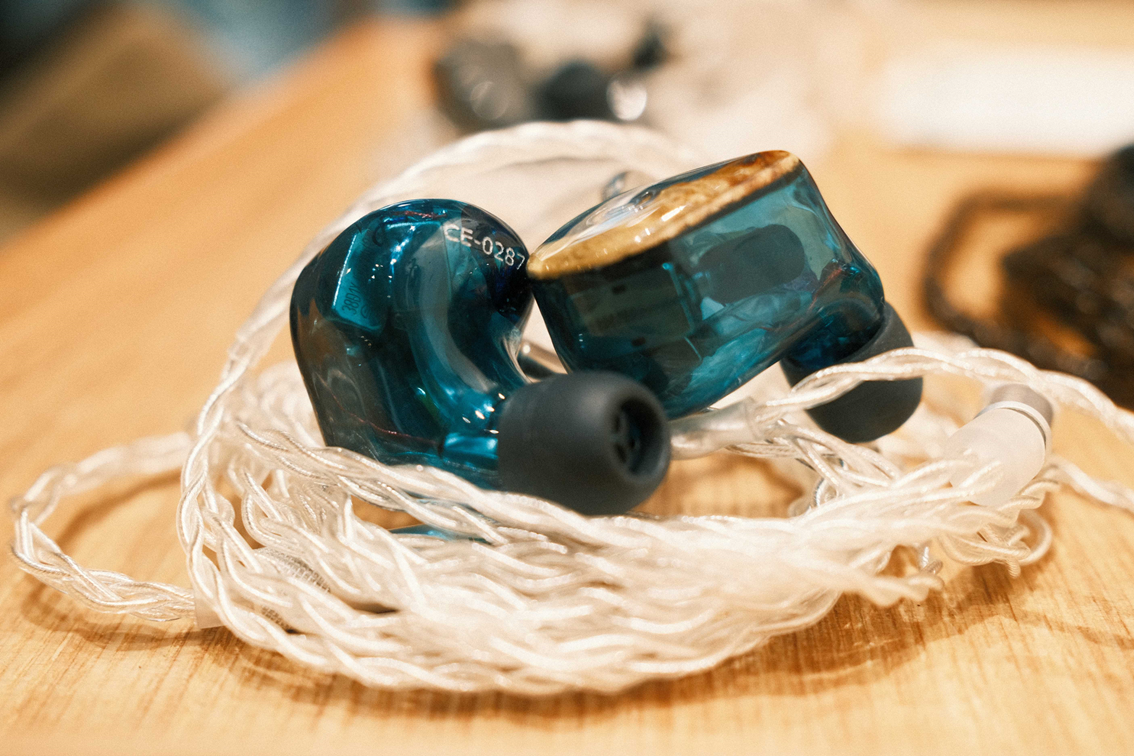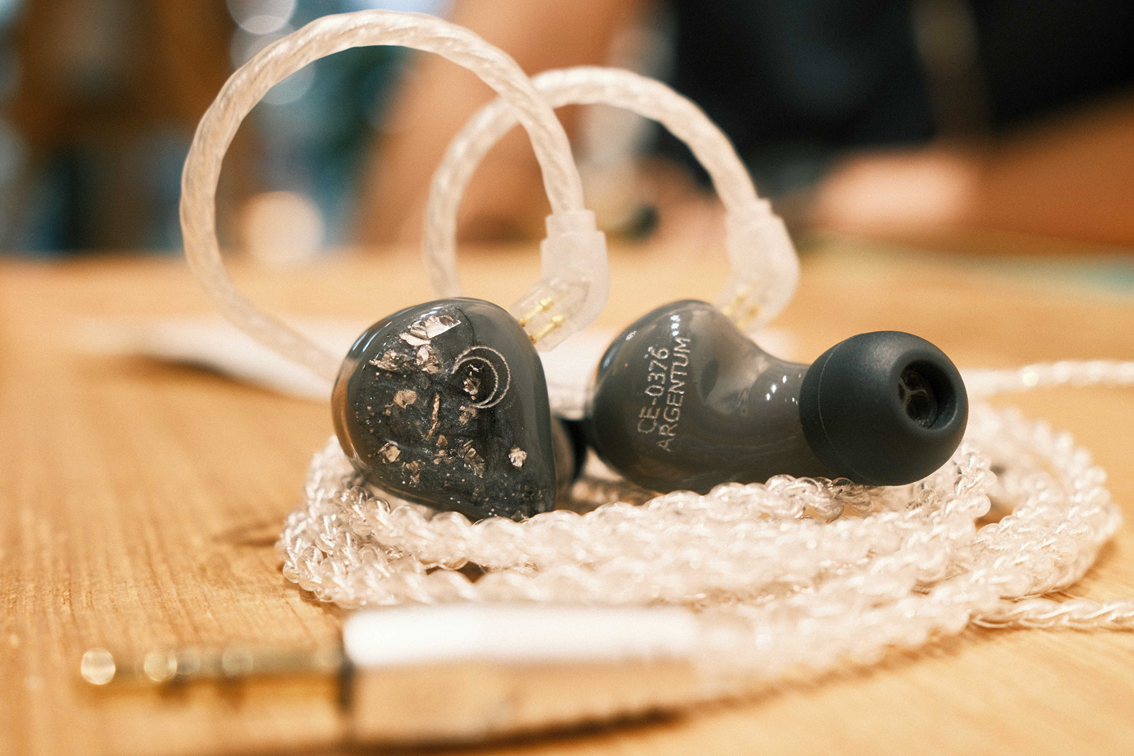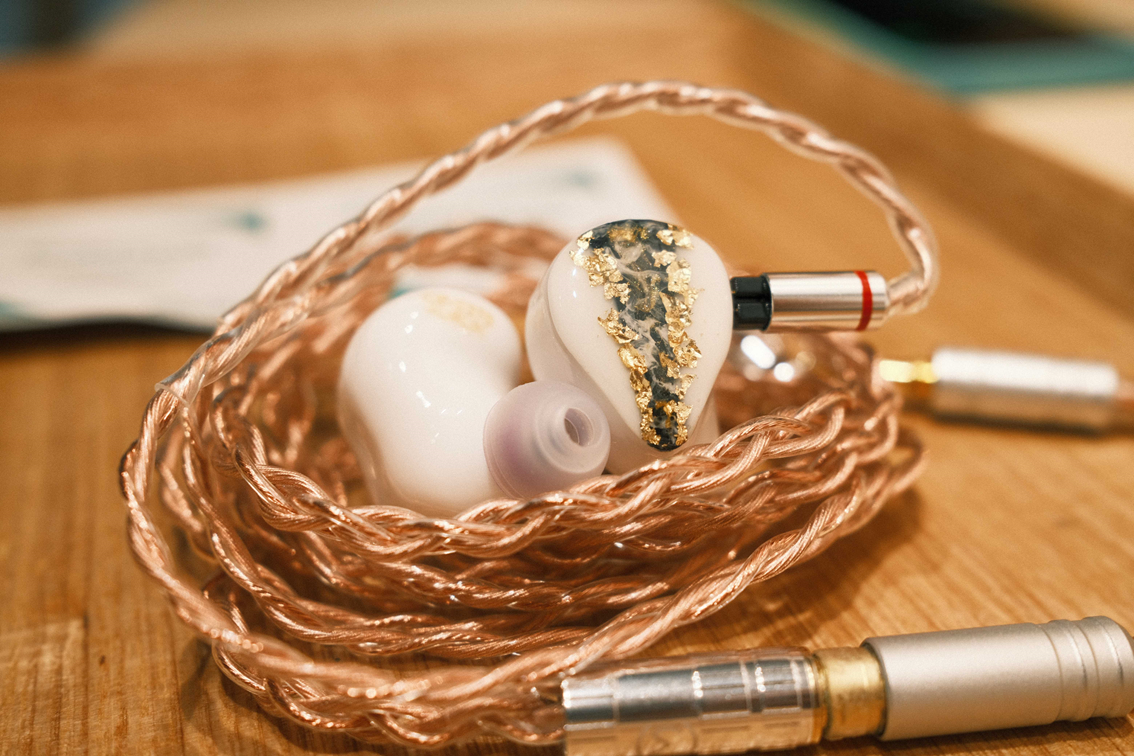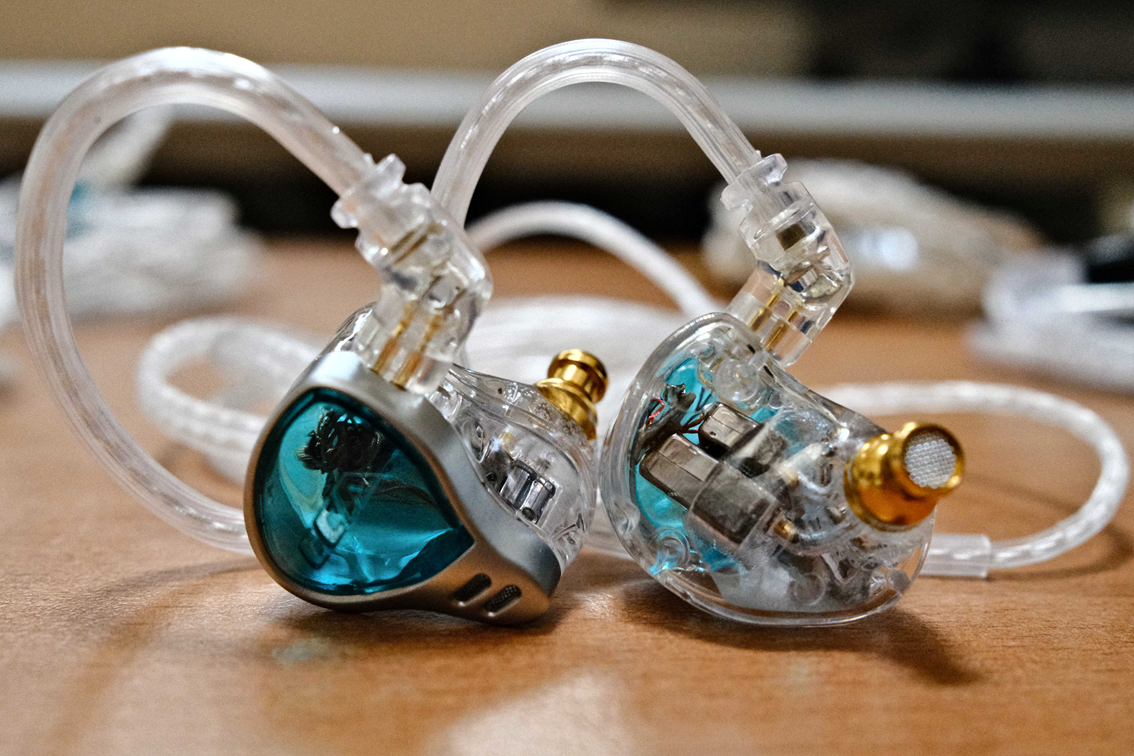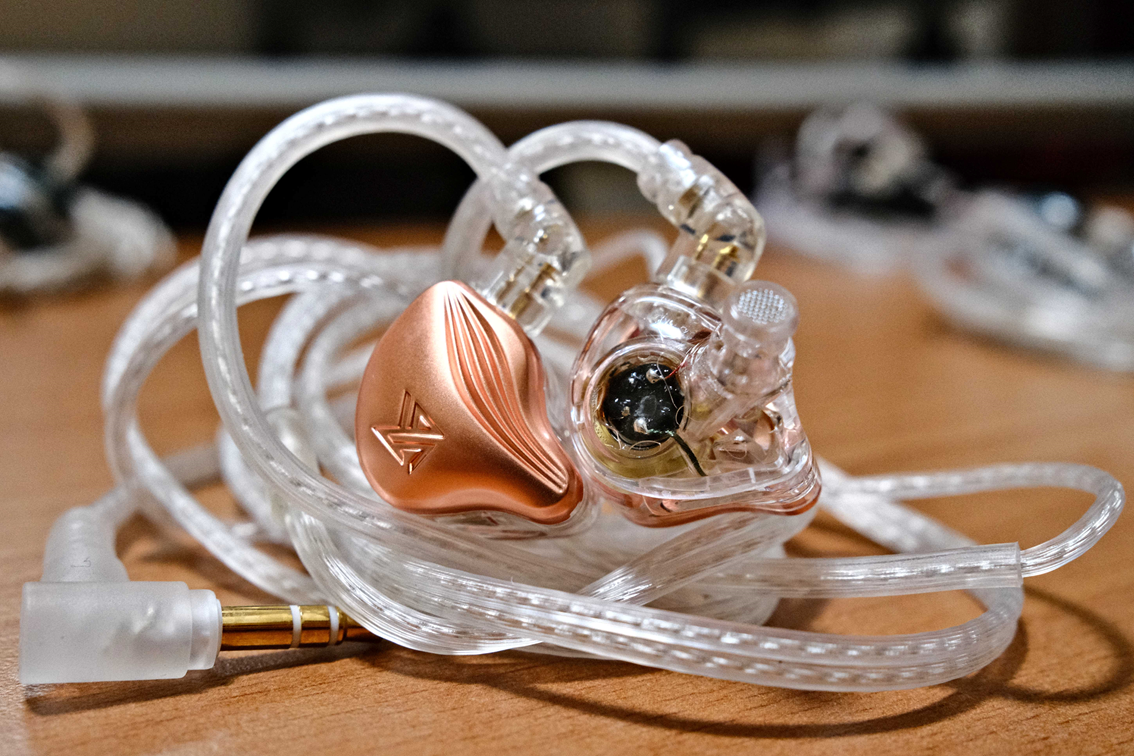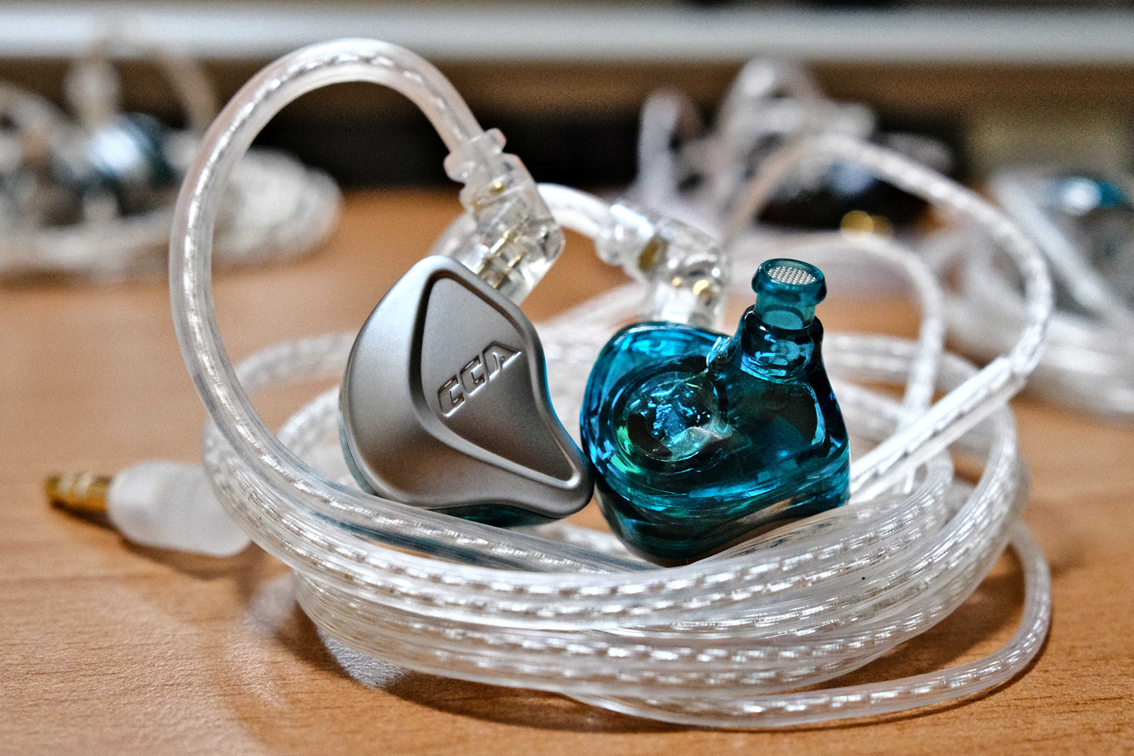Venture Electronics (Part 2/2): Asura 3.0FE (ft. Monk SM, Plus & Lite)
The Asura 3.0 is Venture Electronic's (VE) new 3rd generation of a mid-tier earbuds, which aims to combine the "big headphone-esque" experience into a tiny earbud (that VE achieved in their 2nd generation of buds), with the level of detail we can find from IEMs.
Tl;dr
Asura 3.0 is highly mid-centric with a "big sound". More spacious, more fun and safer sounding than the Monk SM but does not do the technical aspect like layering that much better.
Build and Fit
Absolutely loving the cable, it reminds me of the Plussound Apollonian Series and feels highly premium. The buds fit nicely, just like the Monk SM. But these earbuds feel kind of heavy being weighed down by that Y-split and cable sleeving especially since there isn't a proper fit like an IEM. I use the provided ear-hook in the included "Ex-Pack" to keep these in place.
Sound
Sound testing for all earbuds was primarily done without foam covers, and they were driven via my Schiit IEMagni X Modi 3+ stack with Spotify desktop. At comfortable listening levels, I could get to about 11 o clock on my IEMagni's volume pot on medium gain for the Asura 3.0.
I've never had the chance to listen to their Zen 2.0 buds, and I was certainly excited to give these a shot after Lee mentioned that they are on the same tier as Zen 2.0. On first impression - these had a large instrumental presentation which attributes to its huge initial wow factor. New toy syndrome was strong with this one so I gave the Asura 3.0 plenty of time to ease into my gear rotation.
How can such a tiny piece of equipment produce such a big sound? Although IEMs and earbuds don’t have the same kind of space to play with as with near-field monitors, these tiny things can make use of clever "tuning tricks" to create the illusion of space. Though this may impact the product's tonal balance, for better or for worse. After gaining an understanding of what makes these earbuds tick for me, I feel that two of the biggest factors which played into its "spatial presentation" is the combination of a so-called "tuning trick", and the fact that these have an open housing for much airflow to occur. I'm not an acoustic engineer of any sorts but that boundless, unrestricted soundstage that some IEMs achieve with acoustic chambers might be less tricky to achieve with earbuds due to its open-ear design.
With the Asura 3.0, the perceived soundstage extends just beyond the peripheries of the earbud shell when listening out for lateral images. The centre image is also well defined and quite a bit upfront/intimate. Not in the same way as its younger brother, the Monk SM, which forces a sharp centre image forth with an assertive upper mid presence. Instead, the Asura 3.0 concentrates more energy in the centre-mids, just between the upper and lower mids. Neither quite full from a bold lower mid presence nor sharpened from an upper mid dominance - right in between and hence a good balance between bodied mids and adequate upper mids for the articulation. Also, one of the things I heard which solidified my opinion was the slight hint of honkiness (as if the singer is singing through cupped hands) to the mids which stems from a sprinkle of extra energy in that centre-midrange.
The "honk effect" has a negative connotation in audio since it disrupts tonal balance and pulls the music away from outright realism. This, again, hint of honk on the Asura 3.0's does two things.
1. Positions the mids closer to the ear.
2. Adds some colouration to the music which gives somewhat of a "big room ambience" effect.
This is not an attempt to justify a "bad tuning" but when judged with the big picture in mind, this colouration is precisely what gives the Asura 3.0 its unique character. It artificially widens and enlarges the notes which plays in very well with the Asura 3.0's excellent staging and imaging to add to the immersion. This is one of those products that make me go beyond my usual test tracks and relisten to many songs which are dear to me. Indeed, "VaRiEtY iS THe spIcE oF LifE". Not everything in my collection needs to be drop dead neutral and this is exactly where variety can be appreciated.

The bass and treble? Oh boi I really did get carried away didn't I. The sweet mids and big notes are the main attractions and make up the bulk of the Asura 3.0's presentation. The overall mid-centric sound is just so cohesive that I often get lost in the music and forget that I'm trying to do a thorough analysis of this piece of gear. With that I might add that background instruments tend to sound a little softer than the mids. I'm getting carried away talking about the mids again aren't I? Alright so -
Surprisingly, an even sounding treble response can be heard with adequate top end extension, probably due to open nature of the buds. It isn't the standout feature of the buds since they are projected behind, and softer than the mids at the forefront.
But is there anything the Asura 3.0 could do better? Yea for sure, it has a warm wide band boost that doesn't offer low end instruments much definition. Putting on foams only serves to increase the quantity of bass but not the quality. While cymbals and hats are rendered well to my preference with its even treble response, the opposing end with drums… not quite. Snares and the kick drum are blunted and don't give a satisfying snap or thump. The same thing applies to the orchestral double bass or the hip-hop bass rumble where it sounds diffuse and lacking authority. In essence, the Asura 3.0 lacking definition in its bass, relative to its mids and highs. While layering ability is not lacking, the Asura 3.0 did not impress as much as I hoped in that department.
Did I ramble too much? Here's a summary:
Pros:
Large notes and big "headphone-esque" stage for such tiny buds
Good balance between fun and articulate in the mids
Even-sounding treble response rendering cymbals and hi-hats with good tonal quality and detail
And cons:
Bass lacking the same definition as mids and highs
Bass just offers some warmth but not anything special like the mids which are the main attraction
Slight honky nature of the mids may deter those chasing outright realism
Layering not much of a step up from the Monk SM
I do not have the similarly priced Zen 2.0 but here are some comparisons with all the affordable VE buds I have access to before finishing off.
Monk SM
How does the Asura 3.0's younger sibling stack up? For starters, the shell and hence the fit is exactly the same. Both Asura 3.0 and Monk SM are mid-centric buds to my ears, but in different ways:
- Asura 3.0 - More focus on centre-mids, with equal balance between lower and upper mids (upside down V-shape signature)
- Monk SM - Bright mid-centric sound with mildly boosted mid-bass, lean lower mids, boosted centre mids and upper mids, accompanied with a highly energetic middle to upper treble boost. (W-shape signature)
The SM immediately sounds a little less "rich" than the Asura 3.0 with its brighter tuning with lesser lower mids but it doesn't quite sound thin as some may expect. This stems from the fact that the SM focuses on both centre and upper mids which collectively brings forward and sharpens the overall image to a greater degree than the Asura 3.0. That upper treble boost does wonders for making this sound EXTREMELY detailed (surface level), sharp and sparkly but this also makes the SM more fatiguing to listen to over extended periods depending on your listening volume. YMMV. This in turn reduces dynamics since all the tiniest sounds in the recording are blasted in your face, not natural but very fun!
When accustomed to the SM on lower listening levels for longer listening, these are a blast. My favourite aspect is how the SM avoids sounding tinny (despite its tuning) and can sound highly transparent; the mids are still genuinely good and it scratches that "clarity-itch" with its textured mids. Lastly, it's interesting to note that the SM does seem to have a clearly boosted bassline over the Asura 3.0 which offers just a bit more definition in the low end.
The SM's shares almost the same stage size, with the SM's lateral imaging extending just beyond the earbud shells like the Asura 3.0 although the Asura 3.0 still has a larger note size filling up the stage. On further listen, differences in micro detail aren't very noticeable. It seems that the Asura 3.0 just offers an upgrade in a very specialised big-sounding mid-centric tuning over the SM, but not so much on the technical aspect.
Considering how VE always pushes the standards for products in the budget segment, is it fair for me to expect the Asura 3.0 to outdo everything within its mid-tier price bracket? Its instrument separation is almost equal to that of the Monk SM - adequate separation but little space between layers. I was initially disappointed since I was hoping for a significant upgrade but that in itself is hardly a dealbreaker at all, both sound great. And this doesn't stop me from reaching for the Asura 3.0 over the SM on most days.
I personally like the SM with Pop, rock and metal with its high-clarity, fast paced energetic tuning but not so much for orchestral where tonal accuracy is the main priority (e.g. brass and strings can sound borderline strident on the SM). On the other hand, the Asura 3.0's unique tuning sounds AMAZING with pretty much everything I threw at it. USD148 is quite a big price to pay for a blind buy and if you want something that plays most things well, the Monk+ MP5 version is a very impressive, affordable, safer sounding alternative to your exciting Monk SM for USD5, and it seriously doesn't cut corners.
Monk+ SPC/MP5
SPC and MP5 are similar so I will treat them as a whole. Please look at my post history for part 1/2 of this series for an in-depth comparison between the two. Bass is boomier on the Monk+ even without foams on. Mids sound more conventional with the energy evenly distributed between the centre and upper-mids. Surface details are rendered the same but microdetails are clearly a step below the Asura 3.0. At the same listening volume, stage is comparable and only slightly smaller than the Asura 3.0 - Asura 3.0 extending just beyond the earbud shells while Monk+ extending to the driver itself. Presentation wise, the biggest difference lies in the note size where Asura 3.0 towers over the Monk+ at the expense of a slightly honkier tonal quality.
Monk Lite SPC 120 ohm
The smallest stage relative to the other VE earbuds, with the stage being well within the head and not even extending to the edge of the earbud shell like the Monk+. The Monk lite is also the most congested sounding. It just sounds… alright for the price. It's like a less intense version of the Monk+ in literally every aspect, less boomy bass, less forward mids, less bite in the treble, smaller soundstage… a lite version lol. There's nothing special yet nothing offensive with its conventional V-shape sound. However it does have the most comfortable fit amongst all the earbuds. Like these are literally the best things to grace my ears in all of 2021. I don't have the 40 ohm version to compare but I'd probably take the cheaper version purely from a comfort standpoint since the 120 ohm version already doesn't compete sonically with the Monk+ and Monk SM. The comfort makes these extremely functional, they would make excellent sleeping/chill buds for non-critical listening.
In conclusion, the Asura 3.0 has a unique flavour that will serve well in a collection. Personally, its coloured tuning leads me to use something else for video editing and work-related stuff but it sure makes for a hella fun listen all the time. I'm a big fan of VE's products and I'm totally looking forward to Zen 3.0 possibly coming in 2022.
← Back to mainpage
